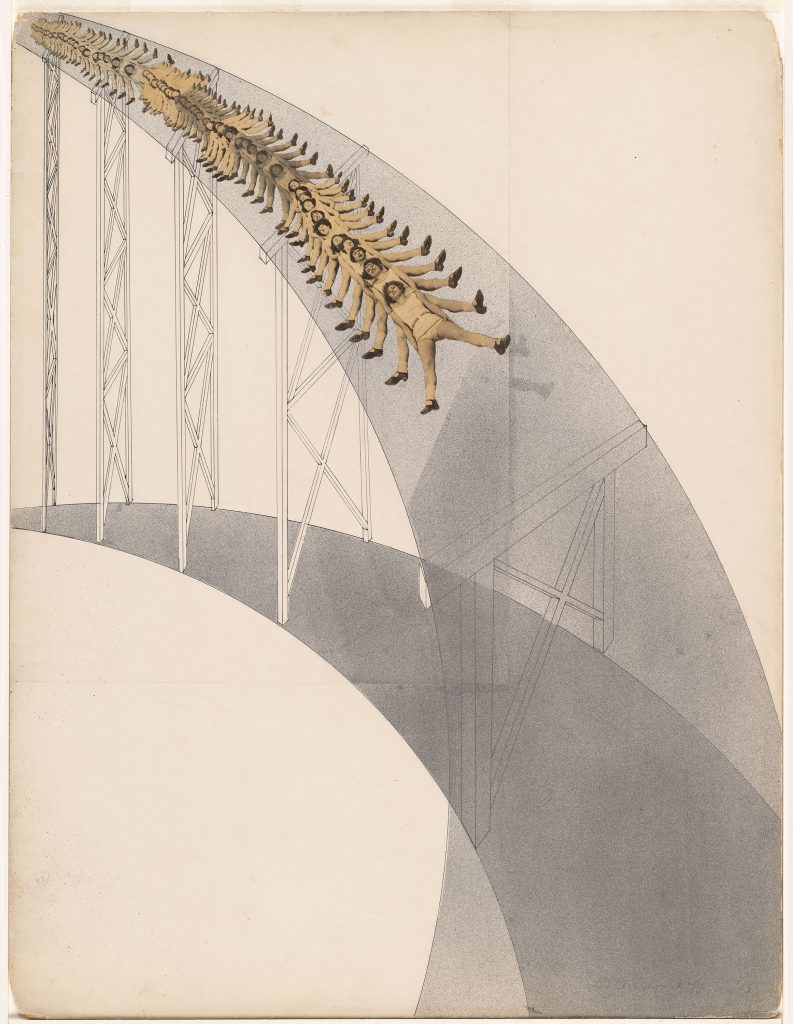By Grant Rindner
Laszlo Moholy-Nagy brought the Bauhaus movement from to Chicago from Germany in the 1930s, launching a revolution in arts and design as one of Chicago’s most influential and iconic innovators. The Renaissance man comes through is the sprawling new exhibit and even the exhibit title “Moholy-Nagy: Future Present,” on display at the Art Institute of Chicago through January 3.
The Renaissance man comes through is the sprawling new exhibit – and even the exhibit title “Moholy-Nagy: Future Present” – on display at the Art Institute of Chicago through January 3.
Among the exhibit’s highlights are Moholy-Nagy’s vertigo-inducing photos taken from the Berlin Radio Tower and a selection of the kinetic Plexiglas sculptures he created late in his career, which hang suspended from the ceiling and walls.
“Moholy was arguably the most versatile artist of the 20th century. He worked in painting, sculpture, printmaking, photography, film, typography, product design, exhibition design, as well as writing influential treatises on art and design,” said Liz Siegel, associate curator of photography at the Art Institute. “Thus it was especially important to demonstrate the many facets of his wide-ranging career over the years.”
Moholy-Nagy moved to Chicago in 1937 creating the New Bauhaus, an offshoot of the influential Bauhaus movement that originated in Weimar, Germany, and stressed the intersection between art, technology, and manufacturing. The idea was to bring art and aesthetic design to everyday life in the industrial age. Moholy-Nagy joined artists such as Wassily Kandinsky and Paul Klee in the movement.
When he came to Chicago he founded the New Bauhaus school to teach the ideals and techniques associated with his movement. The school evolved into the Institute of Design of Chicago’s Illinois Institute of Technology. Siegel noted that founding the New Bauhaus had a profound impact on his prolific artistic output as well as on art education.
“Along with producing painting, sculpture, photography, design, and film, he also was fundraising, lecturing and teaching, traveling, and promoting the work of the school,” Siegel explained.

An entire section of “Future Present” is devoted to the New Bauhaus, including a “teaching wall” that features some of his scholastic ideas. But the exhibit explores the totality of his career with pieces dating to his early work in the 1920s in Germany. The photomontage “Slide” creates a sense of motion by superimposing different images of subjects on top of themselves dozens of times.
Also featured are some of his early cutting-edge advertisements, including pieces for the London Underground subway system and various department stores. The ads and his paintings employ similar graphic elements such as hard, well-defined lines and subdued color schemes as well as the surrealist tendencies that were emblematic of photomontages like “Slide.”
The exhibit is drawing large crowds, even on a weekday afternoon. And patrons are clearly impressed both by Moholy-Nagy’s collected works and the exhibit, organized by the Art Institute, New York’s Solomon R. Guggenheim Museum and Los Angeles County Museum of Art.
“He seemed like a pretty revolutionary artist, someone who was really prolific whether it was etching stuff in Plexiglas or advertisements or his exploration of words” in typography, said Benjamin Gembler, a Chicago Divvy employee who first heard about Moholy-Nagy in Thomas Dyja’s Chicago cultural history The Third Coast. “It’s a lot to take in. It’s fitting that someone who was so influential in mid-century Chicago is having a retrospective here.”
Jeanne Stolbach, a senior housing health care consultant, was impressed by “Dual Form with Chromium Rods,” the suspended Plexiglas and brass sculpture that hangs in the exhibit’s entryway and throws light and shadow as though they are part of the kinetic design. Stolbach said he thought seeing the exhibit in person would be particularly beneficial for young people.
“I think it’s the kind of thing that should be highlighted for young people,” Stolbach said of the retrospective. “The generation now sees great and goes to great schools, but they don’t go to museums.”
Those who attend “Moholy-Nagy: Future Present” get a stunning museum experience and a truly mesmerizing crash course in the vast litany of work that has made Moholy an enduring part of Chicago’s art scene for more than 70 years, generations after his death in 1946.
In addition to the exhibit, the museum is offering several programs related to the exhibit.


